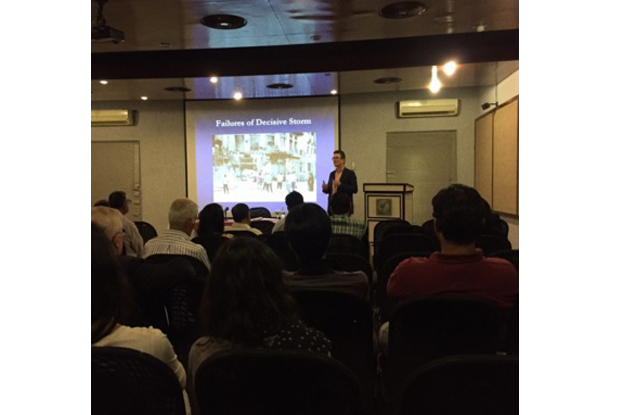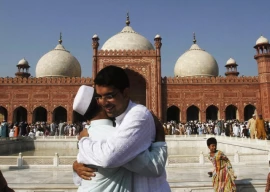
Two thirds of the population of Yemen is in a difficult humanitarian situation. Perhaps, the destruction of world heritage sites will trigger some sort of reaction from the public, said researcher Laurent Bonnefoy.
The research fellow at the Centre de Recherches Internationales in Paris was speaking at a lecture on 'Yemen At War: A Political and Strategic Assessment' at the Alliance Francaise on Wednesday.
Bonnefoy spoke at length about the nature of the Yemen conflict, the forces behind it and the way forward. Giving the example of Syria, he said the real anti-Islamic State (IS) movement began in the European press after the destruction of ancient artifacts. There have been more than 3,000 reported civilian deaths in Yemen but this does not appear to be enough, Bonnefoy lamented.
Bonnefoy holds a PhD in international relations and has worked extensively on the Islamist movement and contemporary religious identities in the Arabian Peninsula.
"Public letters, critical of the policies of Muhammad bin Sultan, have been written by prominent Saudi princes. A reorientation of policy is possible by laying pressure on the ruling family," he explained.
Reiterating his point, Bonnefoy said reorientation will only work if the Saudis are given some sort of symbolic victory; say if President Ali Abdullah Salih leaves Yemen. "Otherwise a complete catastrophe will occur, not only in Yemen but also for the legitimacy of Saudi Arabia, resulting in a huge refugee crisis internationally," he theorised.
Ignorance
According to him, the reason why Yemen has been long overlooked has to do with the complexity of the region. "It is difficult to identify the bad or good guys. In Syria, it was clear who the peaceful revolutionaries in the conflict were. This is not the case with Yemen," he explained. "Secondly, it is also because of the structured and regional approach towards the country that Yemen is considered a problem, linked to terrorism and alQaeda," he said.
Bonnefoy further identified the transitions, which according to him, have been overlooked in the general understanding of Yemeni politics. "The Houthi rebellion was not specifically based on sectarian conflict until it rose to defend a minority group of Zaydis [Shiites]," he said.
The next transition for him was the divide between the south and north in Yemen. "Up until 1990 two Yemeni countries existed; one Zaydi majority and the other Sunni majority. South Yemen existed as the only socialist Arab country," Bonnefoy claimed. "Both the countries merged but evidently North Yemen emerged as the dominant [side] because of the failure of the Southern regime. Seventy-five per cent of the population lived on the Northern side," he explained. Thus, a feeling of discrimination evolved during the emergence of the secessionist movement, he said.
Implications
Bonnefoy said that this ignorance had important implications. The international community has let Saudi Arabia emerge as its main subcontractor when it comes to Yemen, he claimed. "This also goes on to explain the leniency of countries, other than Pakistan, when Saudi Arabia launched an offensive against Houthis and its Yemen war," he said.
Published in The Express Tribune, November 27th, 2015.


















COMMENTS
Comments are moderated and generally will be posted if they are on-topic and not abusive.
For more information, please see our Comments FAQ